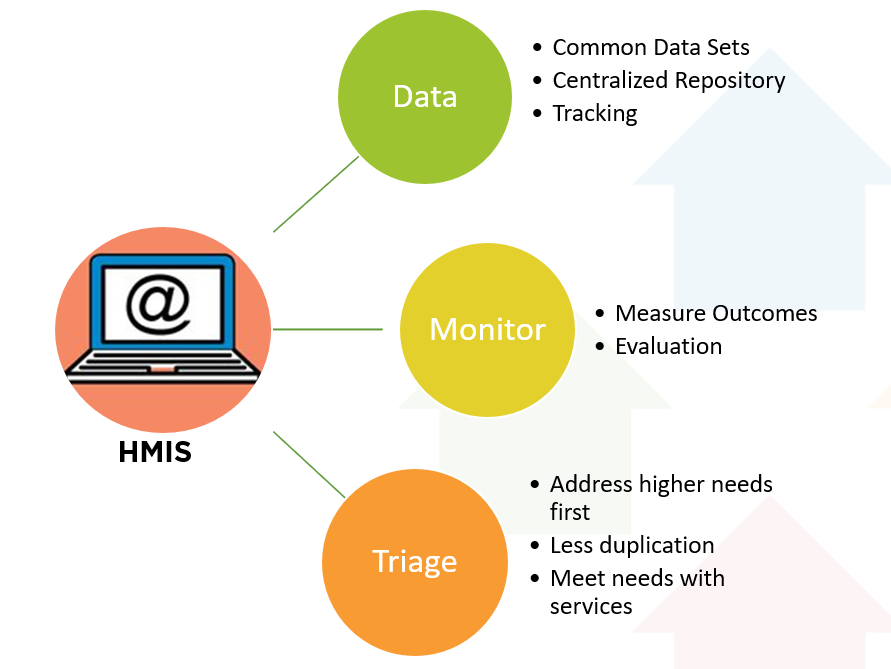Homelessness Management Information System (HMIS)
The Story of the HMIS
A common data system uniting the homeless-serving sector seems like a no-brainer today, but during the early years, it was a new and uncomfortable concept.
In 2008, when Calgary unveiled its 10 Year Plan to End Homelessness, each of the city’s homeless-serving agencies had a mandate to serve different sections of the homeless population.
As the guide in the fight against homelessness, Calgary Homeless Foundation recognized the need for an information system to stitch and coordinate these organizations together, creating a single system of care with real-time data on participants.
Over the next few years, we worked hard to build trust in the data system. Through a community engagement process, we convinced agencies to align their data collection using common definitions and data elements, and obtained privacy approvals and input.
Our efforts paid off, and in 2011, the Homeless Management Information System (HMIS) was launched.
We would like to thank the following funders for helping make the HMIS a reality:
- The Calgary Foundation Community Grant
- Government of Alberta
- Ministry of Huan Services
- NOVA Chemicals Corporation
- ConocoPhillips Canada
- An anonymous donor
How Does the HMIS Work?
All homeless-serving agencies that receive funding from Calgary Homeless Foundation use the HMIS, as well as some non-funded agencies that voluntarily use the system for their programs.
The data in the HMIS is based on the Needs and Services Questionnaire, which individuals and families complete at the door of a participating agency. Staff enter the findings of the questionnaire into the HMIS before the data is reviewed by Calgary Homeless Foundation and other agencies to place people in programs and services.
Calgary Homeless Foundation provides training and ongoing tech support for HMIS users daily.
What are the Benefits of the HMIS?
The HMIS is critical to creating a cohesive system of care. Based on the data, we can prioritize the needs of individuals and families experiencing homelessness and refer them to the right supports.
Our research teams also use HMIS data to gain vital insight into the system of care, so we can focus resources where they will have the most impact. We also share the data with external researchers to better understand macro factors that affect the homeless population.
In addition, the HMIS gathers program performance data that, alongside other factors, help us make annual funding decisions.

Privacy and the HMIS
Calgary Homeless Foundation knows the information collected under the HMIS is sensitive, and we take our privacy obligations towards participants seriously. We have completed multiple privacy impact assessments, and the HMIS was launched only after an assessment was accepted by the province.
Our collection of data is governed by the Freedom of Information and Privacy Act (FOIP) and the Health Information Act.
Under section 33 of FOIP, Calgary Homeless Foundation is authorized to collect information through the HMIS. We have custody of all electronic information stored in the database, while the Government of Alberta retains control of the information collected by the agencies and programs that use the HMIS.
Records are kept for seven years after last contact with an individual. After that time, the HMIS team contacts the Government of Alberta to seek instructions on what to do with the record, and if appropriate, how to dispose of of it. We regularly train our partner agencies on the appropriate way to use and protect information in the HMIS.
What challenges has the HMIS faced?
Long engagement periods before the launch of the HMIS meant that agencies had to enter data into multiple databases. Following the launch, it became clear that separate funding streams and different organizational cultures among agencies was making it difficult to track needs and services.
The quality of the HMIS data during the early rollout period was also too poor to draw firm conclusions. Since most agencies providing emergency shelter were not online, it was difficult to make any assertions about homelessness in Calgary using the data.
Like all new collaborative initiatives, the solution these problems was time and conversations. Over time, our approach to system planning grew more sophisticated.
We began to use the real-time data of the HMIS to create key performance indicators that informed funding decisions and policy advocacy. As our data continues to improve, so too does the range of decisions that can be made using information that had not previously existed.
What is the future of the HMIS?
We envision a day when an information system exists that ties together all the services in the system of care.
At the moment, HMIS captures data from programs funded by Calgary Homeless Foundation and some of the city’s emergency shelters, but not all programs that do not receive funding from us.
Our priority is to increase access to data that encompasses our community partners and organizations not funded by Calgary Homeless Foundation. In this way, HMIS will tie together all agencies in the sector, enabling agile system planning and a cohesive system of care.
If you want to know more about how HMIS works, contact hmis@calgaryhomeless.com for more information.
CONTACT US
Calgary Homeless Foundation
Calgary House
Suite 1100, 550 6 Ave. SW
Calgary, Alberta, Canada T2P 0S2
Ph: (403) 237-6456
Fax: (403) 262-2924

